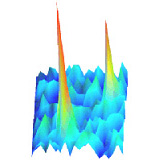Cell-cell and cell-matrix interactions are governed by interactions between individual molecules. But how does a tissue emerge from those localized and individual events? In this review we summarize our current understanding.
Holding it together: when cadherin meets cadherin
Arslan, F. N., J. Eckert, T. Schmidt, and C. P. Heisenberg
Intercellular adhesion is the key to multicellularity, and its malfunction plays an important role in various developmental and disease-related processes. Although it has been intensively studied by both biologists and physicists, a commonly accepted definition of cell-cell adhesion is still being debated. Cell-cell adhesion has been described at the molecular scale as a function of adhesion receptors controlling binding affinity, at the cellular scale as resistance to detachment forces or modulation of surface tension, and at the tissue scale as a regulator of cellular rearrangements and morphogenesis. In this review, we aim to summarize and discuss recent advances in the molecular, cellular, and theoretical description of cell-cell adhesion, ranging from biomimetic models to the complexity of cells and tissues in an organismal context. In particular, we will focus on cadherin-mediated cell-cell adhesion and the role of adhesion signaling and mechanosensation therein, two processes central for understanding the biological and physical basis of cell-cell adhesion.

